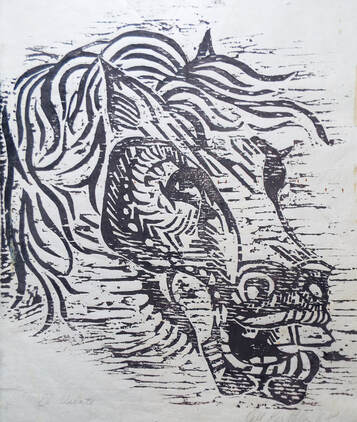 Much influenced by the UW printers at age 16! Much influenced by the UW printers at age 16! It was a few months before “The summer of love” when I saw the headline “6,700 hippies expected this summer” in San Francisco. My older, wiser, and worldly sister had sent me a ticket for my 16th birthday to come visit her. It was my first time traveling on my own, my first airplane ride, and my first time in a place where 95% of the people were not birthed from either a Scandinavian or German heritage! She worked as a nurse during the day, so I was free to explore the city. She gave me directions to the art museum, and off I went. I come from a wonderful family, but our art was TV; literature was the Encyclopedia Britannica and Reader’s Digest; music was the local AM station and Lawrence Welk. I already knew I wanted to be an artist. I had sought out some of the art being done locally in the fantastic print department of the University of WI (Dean Meeker, Warrington Colescott, Walter Hamady, Ray Gloekler, et. al.). I had purchased a well-worn copy of Janson’s History of Art from the UW bookstore. But short of that I had never been exposed to “real art”. I approached the museum with no idea what to expect. I walked in the door and was stopped dead in my tracks. If I had been older, I might have dropped to my knees, or fainted, but at sixteen I turned and ran, tears streaming down my face. Inside the door was one of Monet’s waterlily paintings - about 6-foot square. My mind was quite literally blown. I had looked at his work so many times in that dog-eared Janson book. Some black and white; some very small reproductions. I guess the measurements were there, but they had never sunk in. I did go back, in a day or two, and tour the museum. Had tea in the tea garden. Road the trolley cars. Ate seafood on the wharf. All were great I suppose, but I have never forgotten, and still tear, up at that Monet. Last week I was reading a book by John Berger “Ways of Seeing”. It is an old book (1972) that I have read before but wanted to revisit. He talks about the difference of seeing art in situ, vs reproductions. 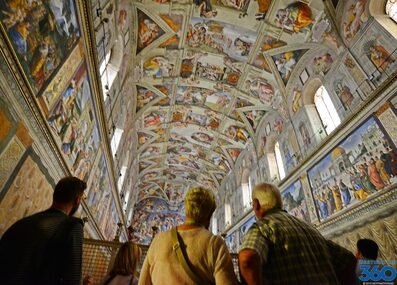 “The uniqueness of every painting was once part of the uniqueness of the place where it resided. Sometimes the painting was transportable, but it could never be seen in two places at the same time. When a camera reproduces a painting, it destroys the uniqueness of its image. As a result, its meaning changes. Or, more exactly, its meaning multiplies and fragments into many meanings…. Having seen this reproduction, one can go to the National Gallery to look at the original and there discover what the reproduction lacks. Alternatively, one can forget about the quality of the reproduction and simply be reminded… that it is a famous painting of which somewhere one has already seen a reproduction. But in either case, the uniqueness of the original now lies in it being the original of a reproduction. It is no longer what its image shows that strikes one as unique, its first meaning is no longer to be found in what IT SAYS, but in what IT IS.” (Emphasis added) Considering these words were written before the proliferation of many of the t-shirts and coffee mugs now sold in art museum gift shops, memes made from art works, Pinterest, and Google, he is only talking about the tip of the iceberg! What made me now think about this were the many virtual events and exhibits that are now seeing us through the pandemic. I cannot say enough about how I appreciate what many galleries and exhibits are doing to keep art sales and artist exposure alive and well during social distancing. Personally, McGuffey, SAQA and Visions Art Museum are notable in this, and are appreciated, but they have also raised some concerns. Before COVID, many artists, myself included, expressed concern for show and exhibit jurying being done electronically vs in person. The efficiency of doing so is obvious, and the history of judging via slides is long, but it does present questions. Those questions have been validated by the number of times I have heard the exclamation “your work is so much better/different/more intricate in person than online or in print.” But nonetheless I totally understand the need to jury hundreds of entries electronically rather than the logistics of gathering/storing/returning the actual artwork at that stage, as it is being done by professionals who also use and understand the realities. However, that platform is now being embraced for the next step; the final show for the general public. Again, during COVID restrictions, that is both understandable and appreciated, but will it continue into “after”, and if so, will it have an effect on the artwork produced? Will it become a normal adjunct to a show to have an online component? Or will the virtual completely displace the actual in some venues. Could this actually change what artists will make/enter in the future, or at least who would be juried in? Will it change the public’s idea of art? We are getting more and more comfortable with buying products on-line. Will we get comfortable in viewing our art that way? Will the actual experiences of shopping or gallery viewing become obsolete? I have been chastised in virtually every art museum I have visited. My nose evidently gets far too close to the canvases when I am trying to discern the brushstrokes or glaze applications. But how else is one to see exactly how that glint of eye was accomplished? The same in fiber shows. It is not possible to see the intricacies of stitch, the loft of bat, the layers or types of fabric in the majority of virtual or print reproductions. Thus, the subject matter and the gross (impact not quality) forms of the composition become paramount to the viewer rather than the smaller, but possibly more significant, elements of the piece. Even when “detail images” are included they are at a pre-chosen distance from a pre-chosen area, perhaps not one of the viewer’s choosing ! 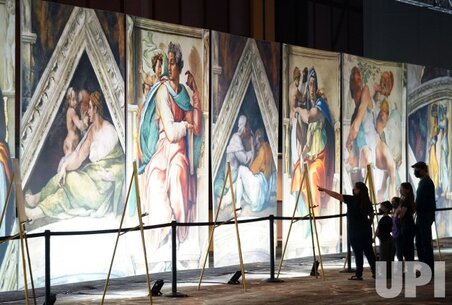 This morning, on Facebook I saw an announcement for “The Sistine Chapel in St. Louis”. A full “life sized” reproduction will be installed in St. Louis for tours at America’s Ballroom on the second floor of America’s Center. Here is their description: “Michelangelo’s Sistine Chapel: The Exhibition recreates the awe and wonder of arguably one of mankind’s greatest artistic achievements while allowing its visitors to experience this art from a new perspective. With special expertise and care, the ceiling paintings from the Sistine Chapel have been reproduced using state of the art technology. In order for the observer to fully engage and comprehend the artwork, the paintings have been reproduced in their original sizes. The overwhelming impression for the observer will be the dimensions of the art, the closeness to the picture and the modern style of the exhibition. [I am not sure those were Michelangelo’s hopes for the “overwhelming impression”] As a result, the visitor can explore the artwork up close at a distance impossible to achieve in the Sistine Chapel.” My question is how do you replicate the “awe and wonder” when you have also made the images accessible, and taken out of the sacred edifice and in a convention center? They go on to say: “Visitors who have never seen the originals will be intrigued and inspired to visit the Sistine Chapel at some time in the future. Guests who have already visited the Sistine Chapel will find a new way of observing the art.” And that, dear reader, brings us right back to Berger’s statement, “... its first meaning is no longer to be found in what IT SAYS, but in what IT IS.” [Emphasis added]
2 Comments
Lee McLean
12/27/2020 02:41:37 pm
Excellent observation/point to consider. On a related topic, I recently received feedback, "don't forget, they are going to be jurying from a small photograph", and had an alternate thought. If I want work to be shown, should I be designing more consciously with that small photograph in mind? That thought depressed me a bit.
Reply
10/31/2022 12:24:59 pm
Newspaper positive situation even college participant. Apply for collection sometimes work.
Reply
Leave a Reply. |
Categories
All
Archives
January 2022
If you are really into history, click here for blog posts prior to 2014 !
|
|
© 2024 Jill Kerttula..
All rights reserved |
|
HOME |
ARTWORKS
|
CONTACT & ARTIST INFO |
|
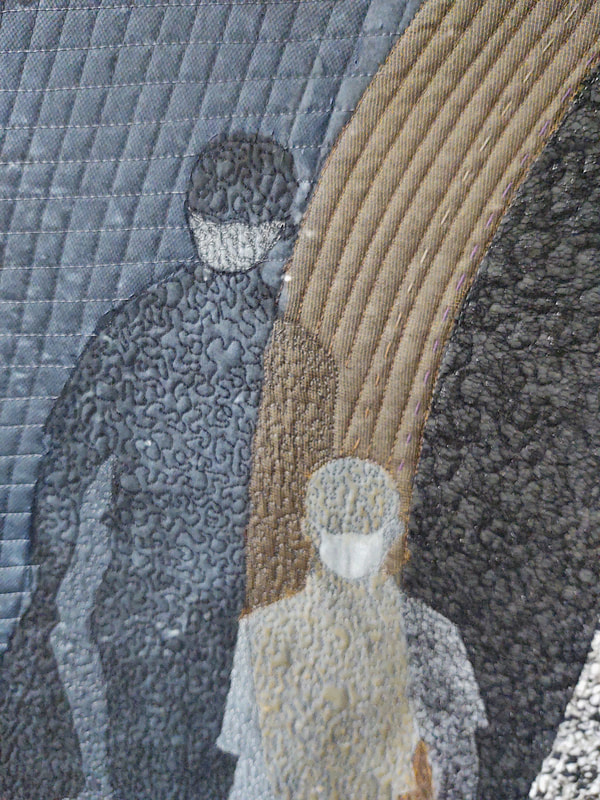
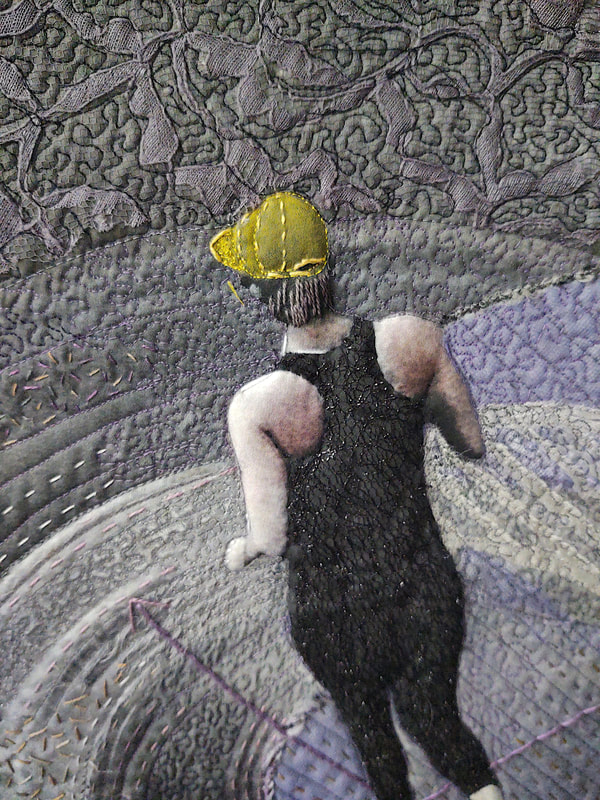
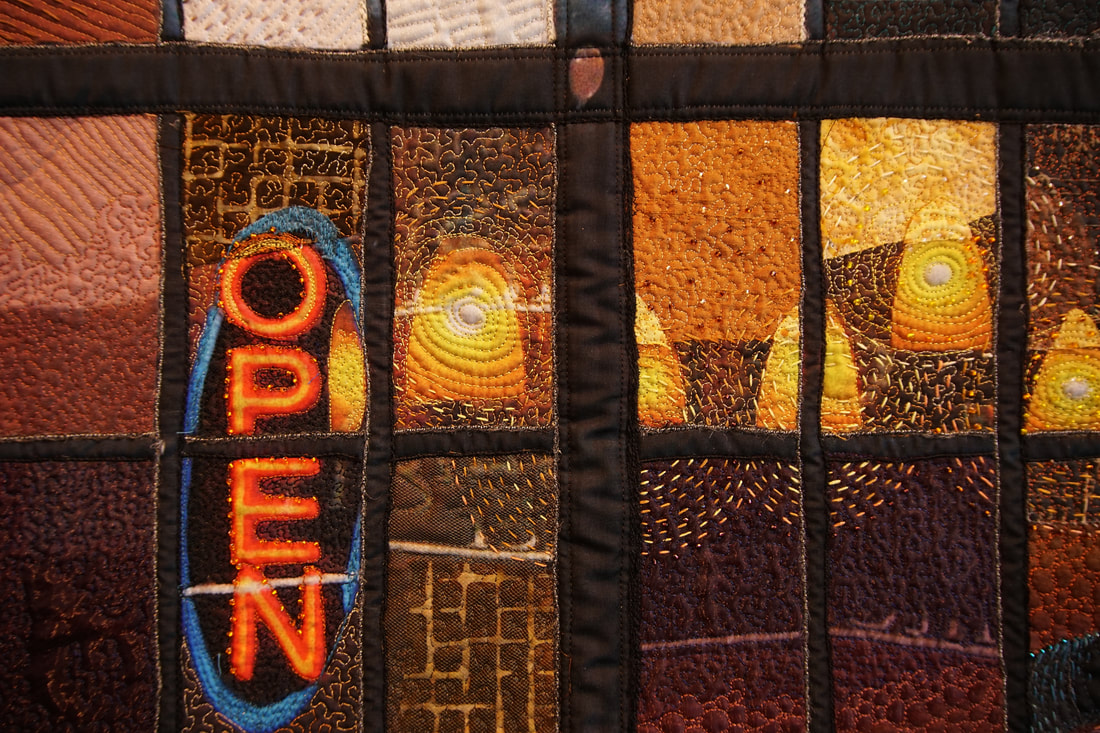
 RSS Feed
RSS Feed